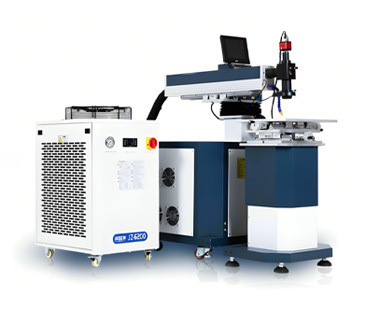Exploring the Versatility of Laser Welding in Various Mold Repair Applications
Release time:
2025-05-06
Exploring the Versatility of Laser Welding in Various Mold Repair Applications Table of Contents 1. Introduction to Laser Welding Technology 2. Understanding Laser Welding: A Technical Overview 3. Applications of Laser Welding in Mold Repair 3.1 Laser Welding in the Automotive Industry 3.2 Aerospace Industry Applications 3.3 Mold Repair in
Exploring the Versatility of Laser Welding in Various Mold Repair Applications
Table of Contents
- 1. Introduction to Laser Welding Technology
- 2. Understanding Laser Welding: A Technical Overview
- 3. Applications of Laser Welding in Mold Repair
- 3.1 Laser Welding in the Automotive Industry
- 3.2 Aerospace Industry Applications
- 3.3 Mold Repair in Medical Devices
- 3.4 Repairing Consumer Products
- 4. Benefits of Using Laser Welding for Mold Repair
- 5. Techniques and Processes in Laser Welding
- 6. Challenges in Laser Welding and Their Solutions
- 7. The Future of Laser Welding in Mold Repair
- 8. Conclusion
- 9. Frequently Asked Questions
1. Introduction to Laser Welding Technology
Laser welding has emerged as a groundbreaking technique in the industrial landscape, particularly in mold repair applications. This innovative process utilizes concentrated laser beams to join materials, providing unparalleled precision and efficiency. As industries evolve, the demand for effective mold repair solutions has intensified, making laser welding a go-to choice for manufacturers seeking to optimize production and reduce downtime.
2. Understanding Laser Welding: A Technical Overview
Laser welding operates on the principle of using a high-powered laser to create a concentrated heat source that melts materials at the joint. This method can be applied to various materials, including metals, plastics, and composites. The key components of a laser welding system include:
- **Laser Source:** Generating the laser beam, which can be a solid-state, fiber, or CO2 laser.
- **Optical System:** Directing the laser beam to the desired welding spot.
- **Control System:** Adjusting parameters such as power, speed, and focal length for optimal results.
The flexibility and adaptability of laser welding make it suitable for intricate repairs, ensuring high-quality outcomes with minimal distortion.
3. Applications of Laser Welding in Mold Repair
Laser welding is revolutionizing mold repair across multiple sectors due to its precision, speed, and reliability. Below, we explore its applications in various industries.
3.1 Laser Welding in the Automotive Industry
In the automotive sector, molds are essential for producing various components, from body panels to intricate detailing. Laser welding allows for quick and precise repairs of molds, reducing lead times and enhancing production efficiency. The ability to repair without removing the mold from the production line helps save costs and minimizes disruption.
3.2 Aerospace Industry Applications
The aerospace industry demands the highest standards of quality and safety. Laser welding offers exceptional control over the welding process, ensuring that even the most delicate components can be repaired without compromising structural integrity. This technology is particularly useful for repairing turbine blades, fuselage molds, and other critical components.
3.3 Mold Repair in Medical Devices
In the medical device manufacturing sector, precision is paramount. Laser welding enables manufacturers to repair molds with extreme accuracy, ensuring that medical devices meet stringent regulatory requirements. This application is vital for producing products like syringes, surgical instruments, and diagnostic tools.
3.4 Repairing Consumer Products
For the consumer products industry, laser welding enhances the repair process of molds used for various household items and electronics. This technique not only ensures aesthetic quality but also maintains the functional integrity of the products, leading to higher customer satisfaction.
4. Benefits of Using Laser Welding for Mold Repair
Laser welding presents numerous advantages for mold repair applications, including:
- **High Precision:** Laser welding allows for extremely precise repairs, minimizing the risk of flaws.
- **Rapid Processing:** The speed of laser welding significantly reduces downtime, enabling quicker turnaround times for repairs.
- **Minimal Heat Affected Zone (HAZ):** The concentrated nature of the laser beam results in a smaller HAZ, preserving the surrounding material properties.
- **Versatility:** Applicable to a wide range of materials, laser welding can handle various mold types and compositions.
- **Cost-Effectiveness:** Reducing the need for extensive mold replacements saves manufacturers money in the long run.
5. Techniques and Processes in Laser Welding
Various techniques can be employed in laser welding, depending on the desired outcome and the materials involved. Some commonly used methods include:
- **Keyhole Welding:** This technique involves forming a deep penetration weld pool, suitable for thick materials.
- **Conduction Welding:** Ideal for thin materials, conduction welding relies on heat conduction to create a joint.
- **Hybrid Laser Welding:** Combining laser and arc welding, this method offers increased penetration and is effective for thicker sections.
Understanding these techniques can help manufacturers choose the best approach for their specific mold repair needs.
6. Challenges in Laser Welding and Their Solutions
While laser welding is a highly effective method for mold repair, it is not without its challenges. Some common issues include:
- **Material Compatibility:** Different materials may react differently to laser welding. Conducting preliminary tests can determine the best approach.
- **Weld Quality:** Ensuring consistent weld quality requires precise control over parameters. Implementing advanced monitoring systems can help maintain quality assurance.
- **Equipment Costs:** The initial investment in laser welding technology can be high. However, long-term savings through reduced downtime and improved efficiency often justify the cost.
7. The Future of Laser Welding in Mold Repair
As technology advances, the future of laser welding looks promising. Innovations such as automation, artificial intelligence, and improved laser sources are set to enhance the capabilities of laser welding further. Manufacturers are likely to see even greater efficiency, accuracy, and versatility, solidifying laser welding’s role in mold repair applications.
8. Conclusion
Laser welding is transforming the mold repair landscape across various industries, offering unmatched precision, efficiency, and adaptability. With its ability to provide high-quality repairs rapidly while minimizing costs, laser welding is positioned as a vital technology for manufacturers looking to maintain competitiveness in a fast-paced market. As we continue to explore advancements in laser welding, its applications will undoubtedly expand, leading to even more innovative solutions in mold repair.
9. Frequently Asked Questions
1. What materials can be welded using laser welding?
Laser welding can be applied to a wide range of materials, including metals (steel, aluminum, titanium), plastics, and composites.
2. How does laser welding compare to traditional welding techniques?
Laser welding offers higher precision, lower heat input, and reduced distortion compared to traditional welding methods.
3. Is laser welding suitable for high-volume production?
Yes, laser welding is ideal for high-volume production due to its speed and efficiency, making it a preferred choice in many manufacturing environments.
4. What safety measures are necessary when using laser welding?
Proper safety protocols should be followed, including the use of protective eyewear, appropriate ventilation, and equipment safeguards to prevent accidents.
5. How can I determine if laser welding is the right choice for my mold repair needs?
Consulting with a welding expert or conducting preliminary tests can help determine the suitability of laser welding for specific mold repair projects.
Key words:
- All
- Product Management
- News
- Introduction
- Enterprise outlets
- FAQ
- Enterprise Video
- Enterprise Atlas
Recommend News





Contact Us
Phone: +86 (China) 152-5267-7152
WhatsApp: +86 (China) 152-5267-7152
E-mail:info@udibomfg.com
Address: Building 1002 Redstar International Technology Park, Mudu Town, Wuzhong District, Suzhou City, Jiangsu Province, China





